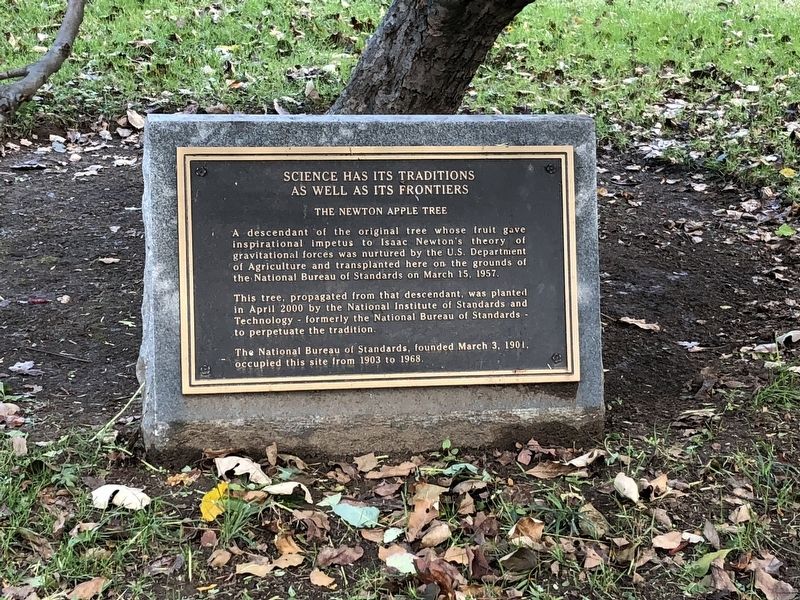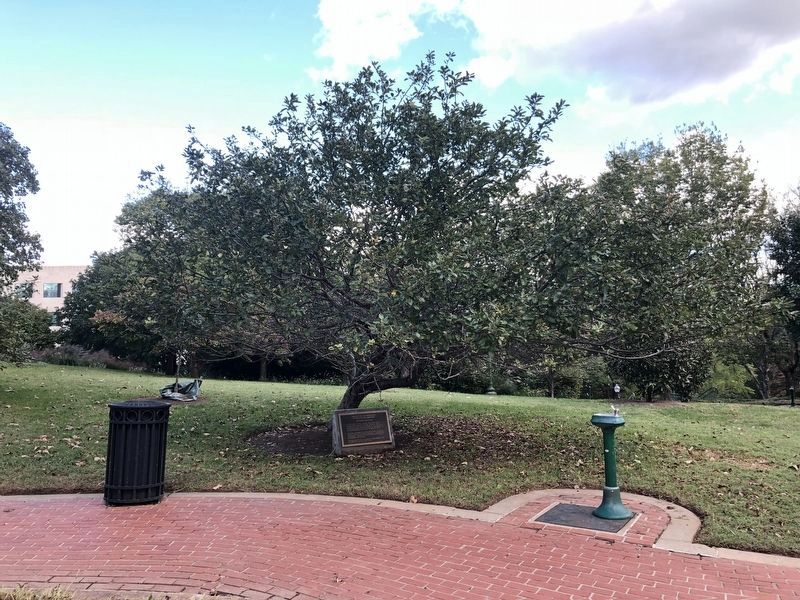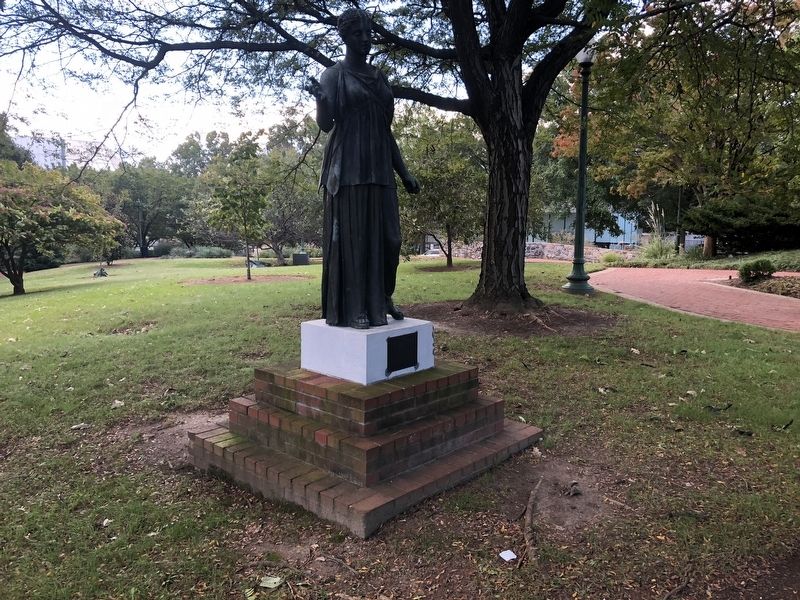Forest Hills in Northwest Washington in Washington, District of Columbia — The American Northeast (Mid-Atlantic)
Science Has Its Traditions As Well As Its Frontiers
The Newton Apple Tree

Photographed By Devry Becker Jones (CC0), October 13, 2018
1. Science Has Its Traditions As Well As Its Frontiers Marker
A descendant of the original tree whose fruit gave inspirational impetus to Isaac Newton's theory of gravitational forces was nurtured by the U.S. Department of Agriculture and transplanted here on the grounds of the National Bureau of Standards on March 15, 1957.
This tree, propagated from that descendant, was planted in April 2000 by the National Institute of Standards and Technology - formerly the National Bureau of Standards - to perpetuate the tradition.
The National Bureau of Standards, founded March 3, 1901, occupied this site from 1903 to 1968.
Topics. This historical marker is listed in these topic lists: Agriculture • Science & Medicine. A significant historical year for this entry is 1903.
Location. 38° 56.511′ N, 77° 3.93′ W. Marker is in Northwest Washington in Washington, District of Columbia. It is in Forest Hills. Marker can be reached from International Drive Northwest east of International Place Northwest, on the right when traveling west. On the grounds of International Park. Touch for map. Marker is at or near this postal address: 3500 International Drive Northwest, Washington DC 20008, United States of America. Touch for directions.
Other nearby markers. At least 8 other markers are within walking distance of this marker. First Atomic Clock, 1948 (approx. 0.2 miles away); "Music of the Spheres" (approx. 0.2 miles away); Connecticut Avenue Streetcars (approx. 0.2 miles away); Wormely Family Estate Site (approx. ¼ mile away); Site of the National Bureau of Standards (approx. ¼ mile away); Landscape (approx. ¼ mile away); Cultural Institutions (approx. 0.3 miles away); Rock Creek Park (approx. 0.4 miles away). Touch for a list and map of all markers in Northwest Washington.
Also see . . . 15 Unusual Things in D.C. that Tourists Should Seek Out. Washington Post article from September 18, 2018 (Submitted on October 14, 2018, by Devry Becker Jones of Washington, District of Columbia.)
Credits. This page was last revised on January 30, 2023. It was originally submitted on October 14, 2018, by Devry Becker Jones of Washington, District of Columbia. This page has been viewed 155 times since then and 15 times this year. Photos: 1, 2, 3. submitted on October 14, 2018, by Devry Becker Jones of Washington, District of Columbia. • Bill Pfingsten was the editor who published this page.

